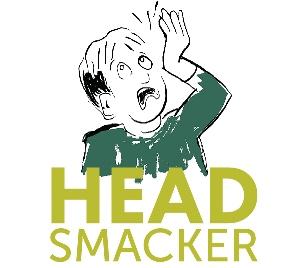
Head Smacker: The theory of winners and losers
House Chaplain Fr. Patrick Conroy was asked to resign by Speaker Paul Ryan, we learned yesterday. Maybe he couldn’t get with the program.
On November 6, as a House committee was taking up the tax cut legislation, Father Conroy offered his daily prayer. In part, it said
“As legislation on taxes continues to be debated this week and next, may all Members be mindful that the institutions and structures of our great Nation guarantee the opportunities that have allowed some to achieve great success, while others continue to struggle. May their efforts these days guarantee that there are not winners and losers under new tax laws, but benefits balanced and shared by all Americans.”
To be fair, Speaker Ryan denied that the contents of Fr. Conroy’s prayers were the cause of his forced resignation. But this one might very well have been seen as inconsistent with Speaker Ryan’s and President Trump’s theory of winners and losers.
Many have noted that for the right wing, the way to provide incentives for the rich to work more is to give them more money, while the way to provide incentives for the poor to work more is to take away theirs.
For the rich and corporations, working more means investing their money. For the poor, it means increasing hours of work. The GOP theory requires just the kind of winners and losers that Father Conroy prayed to avoid.
How is this playing out in Washington these days?
Consider this: Over the past week or so, we’ve seen the House Agriculture Committee approve a farm bill that would impose work requirements on low-income people receiving SNAP/food stamp benefits likely to reduce or eliminate food assistance for millions of people. On Wednesday, Housing and Urban Development Secretary Ben Carson announced a proposal to increase rent for low-income tenants. It too would allow/impose a work requirement. About half of the 4.7 million families in subsidized housing would see an increase; the very poorest households would see their rent triple, from $50 to $150 per month.
The SNAP and rental housing proposals, along with the Administration’s approval of state plans to require work requirements for Medicaid, are all carrying out the poor part of the right wing’s rich/poor incentives theory. They are all about reducing or eliminating people’s assistance, both by requiring more hours of work than people are likely to be able to achieve and by imposing so much red tape around qualifying for benefits that people will drop off. Oh – and they’ll simply cut benefits too, as in the rent tripling for the poorest households.
On the other hand, the Joint Committee on Taxation confirmed that among the tax cuts enacted last year, the drop in taxes for people paying taxes on their business income through their individual income tax would go overwhelmingly to those with the highest incomes. More than 60 percent of that tax cut would go to people earning $500,000 or (lots) more. A fraction of a percent would go to those earning $30,000 or less. This is not a surprise.
And now we hear that some chutzpah-driven tax cutters are not satisfied with the close to $2 trillion in tax cuts they just got. They are pursuing a new $100 billion reduction in the capital gains tax, by indexing the gains to inflation. The capital gains tax, at a maximum of 24 percent, is already way lower than the top individual income tax rate (37 percent). The Tax Policy Centerestimates that about three-quarters of the benefit from that lower capital gains tax rate goes to people with incomes of $1 million or more, whose average tax break exceeds $146,000. Despite that, Ryan Ellis, a senior tax adviser for the Family Business Coalition, wants us to believe “It benefits rich, poor, middle class, everybody.” Sure it does. Those proposing a further capital gains tax reduction are urging the Trump Treasury Department to impose it unilaterally, without going through Congress. There is doubt, including a 1992 (G.W. Bush era) Justice Department ruling, that the Treasury has the authority to lower capital gains tax rates by indexing the gains to inflation.
Now, the implications of Father Conroy’s prayer might suggest that with “the institutions and structures of our great Nation” already doing so much to augment the opportunities of some for great success, it isn’t really in our national interest to give them even more. Maybe that $100 billion could better balance the benefits shared by all Americans if it were invested in real jobs programs and the supports like health coverage and child care that make work possible. But hey – get with the program.
The thing about theories, though, is you’re supposed to test them. Over decades, there is a lot of evidence that handing rich people and corporations more tax breaks is not a particularly good way to promote job growth. As for the recent tax cuts? The data is rolling in to show that corporations are overwhelmingly increasing their shareholders’ wealth and not doing much either to create jobs or to raise wages for their employees. And we know that denying people assistance to meet basic needs can reduce work, not promote it (see here, and here, for starters).
The winners and losers theory says afflict the afflicted and comfort the comfortable. It may be disproven, but Trump and Ryan are hard at work to apply it.

The views and opinions expressed in this post are those of the author(s) and do not necessarily reflect those of MomsRising.org.
MomsRising.org strongly encourages our readers to post comments in response to blog posts. We value diversity of opinions and perspectives. Our goals for this space are to be educational, thought-provoking, and respectful. So we actively moderate comments and we reserve the right to edit or remove comments that undermine these goals. Thanks!